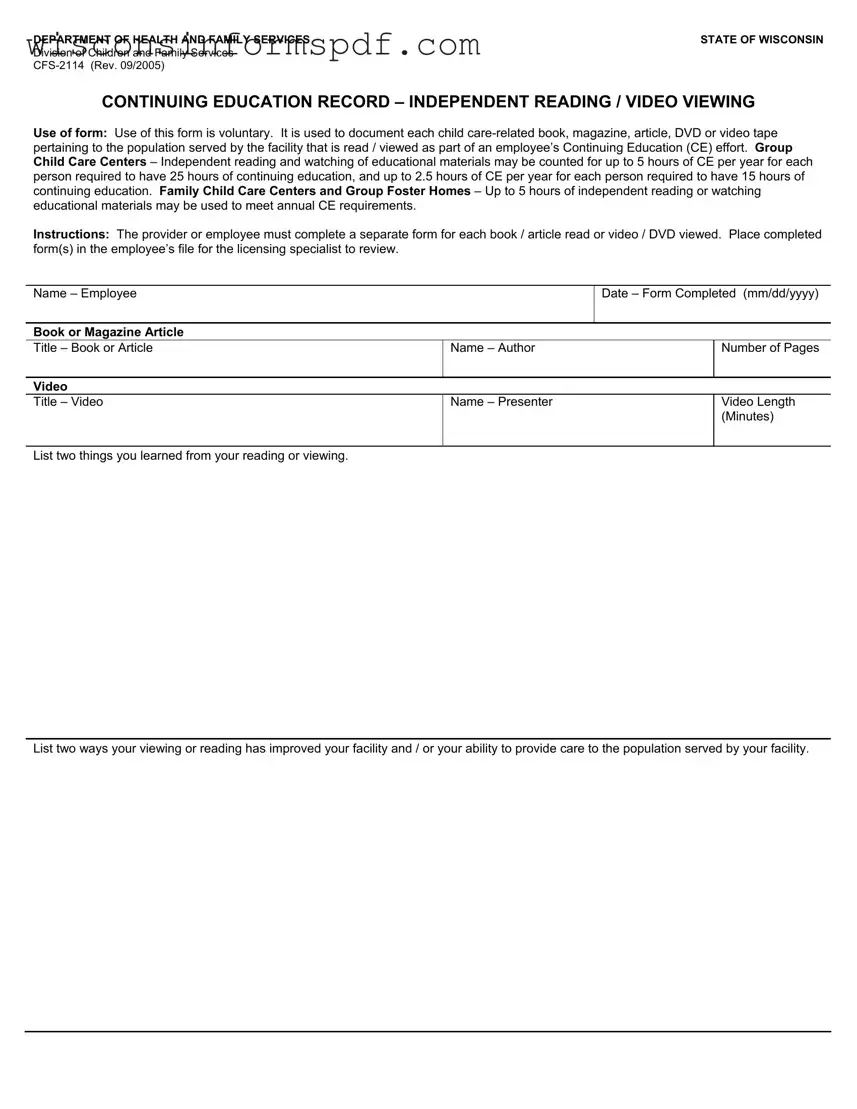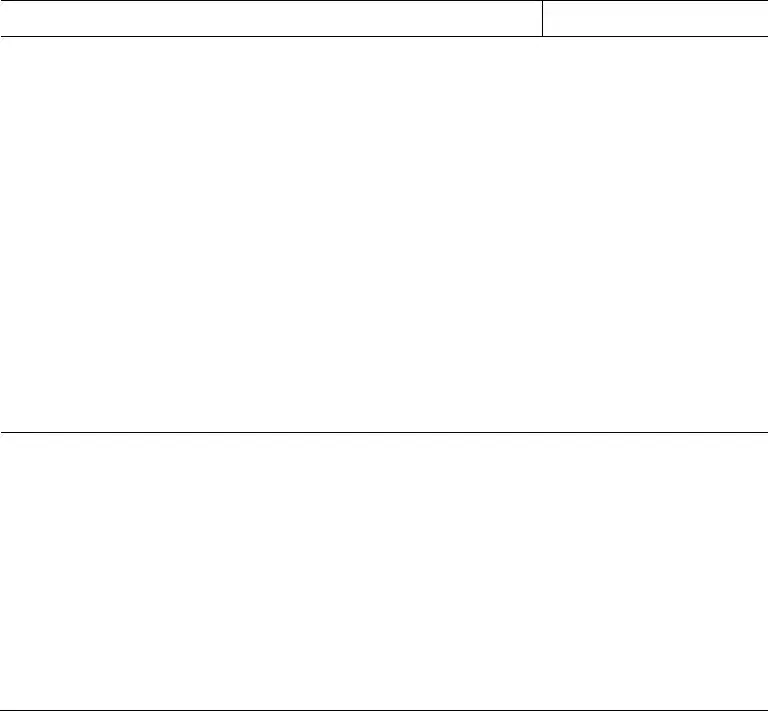What is the purpose of the Wisconsin CFS 2114 form?
The Wisconsin CFS 2114 form is designed for use in child care and group foster home settings to document continuing education (CE) activities that involve independent reading or viewing of educational materials. Its main purpose is to track the efforts of employees in enhancing their knowledge and skills through self-directed learning. This learning can include books, magazines, articles, DVDs, or videotapes pertinent to the care provided at their facility. The form helps to ensure that employees engage in professional development as part of their annual CE requirements.
Who is required to use the Wisconsin CFS 2114 form?
Use of the Wisconsin CFS 2114 form is voluntary but highly recommended for employees of group child care centers, family child care centers, and group foster homes in Wisconsin. These employees need to fulfill specified continuing education hours annually, and the form acts as a documentation tool to record independent learning activities. Licensing specialists may review these forms during audits to verify that CE requirements are being met.
How many hours of independent study are credited through the CFS 2114 form?
For employees in group child care centers, up to 5 hours of independent reading or video viewing can be credited towards the annual 25 hours of CE required. If an employee is required to complete 15 hours of continuing education annually, up to 2.5 hours can be counted through independent learning. Similarly, family child care centers and group foster homes can count up to 5 hours of independent reading or watching educational materials towards their annual CE requirements. This makes the form an integral part of meeting professional development goals in these settings.
What information must be provided on the CFS 2114 form?
When completing the CFS 2114 form, it’s essential to provide detailed information about the educational activity. This includes the name of the employee who engaged in the learning, the completion date, and specific details about the material, such as the title and author of a book or article, or the name and length of a video or DVD. Additionally, the employee must list two things they learned from the material and describe how it has improved their facility or their ability to provide care to the population served. This information underscores the practical impact of continuing education on professional practice.
Where should completed CFS 2114 forms be kept?
After filling out the CFS 2114 form, it should be placed in the employee’s file within the facility. This ensures that the documentation is readily available for review by licensing specialists who may evaluate the facility for compliance with state requirements. Keeping these forms organized and accessible supports a transparent and efficient review process during licensing visits.

